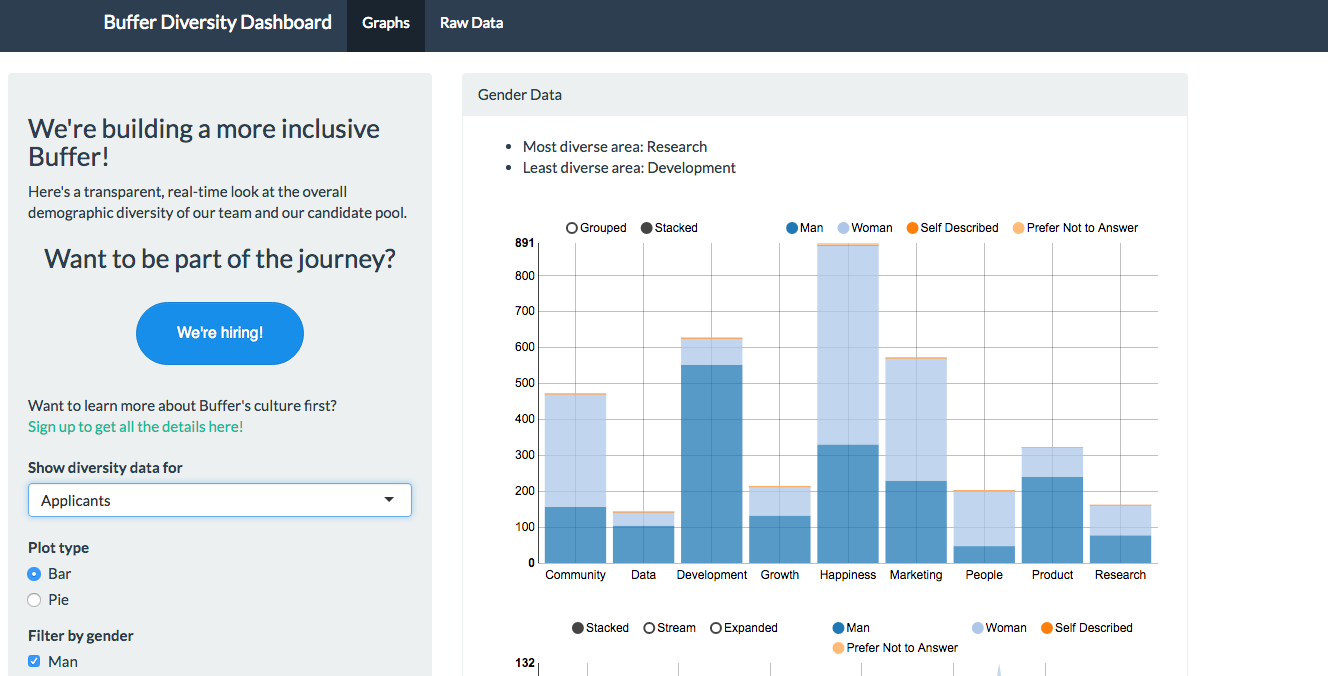There’s no sugarcoating this issue.
In an article last week, EdSurge shared a 2013 study by University of California, Berkeley economists Ross Levine and Rona Rubenstein, who analyzed the common traits of entrepreneurs and found that most entrepreneurs were white and male. The next logical question is, are those entrepreneurs’ companies any better, in terms of diversity? A few edtech companies are now using resources to document—and potentially address—disparities in their ranks.
Clever Shares Its Survey Results
A few weeks ago, school data provisioning platform Clever released the following survey results in a blog post, as a first step in its endeavor to shed light on the company’s own diversity—or lack thereof. The effort comes out of Clever’s signing of the Kapor Capital Founders’ Commitment, “a pledge to invest in creating a diverse and inclusive workplace and to contribute to our local community.”
"In business, there's an adage, 'you make what you measure.' We care a lot about building a diverse team at Clever, and knew the first step towards improving would be to measure ourselves,” says CEO Tyler Bosmeny.
Back in December 2015, Clever administered a demographic survey to its team of employees, asking questions related to gender, race, age, religion and sexuality, among other things.

The results? Upon first glance at the graphs, Clever primarily employs white, male, straight Caucasians—but looking within the data, there are more unique factors to consider. For example, while women make up only 13 percent of tech roles (shown above), non-tech roles like marketing, sales, or business development are majority female (63 percent).
Clever’s largest minority demographic is Asian, making up 22 percent of the staff (see graph below). But Latino, black and multiracial employees combined make up less than 16 percent of the company (excluding American Indian and Native Hawaiian, who are not represented at Clever). Clever also found that 93 percent of its staff are not “the primary caretaker of a minor,” only 2 percent are veterans and 87 percent are straight. From an age perspective, only 7 percent of employees are over the age of 35 (shown in the second graph below).


Now What? Combating Disparities
In the space of public education, where K-12 students of color make up a larger percentage of the population than white students, and students are 50 percent female, there’s a fundamental disconnect between creators and users when edtech companies are homogenous. So then, how does Clever move forward, both as a company, and as an example for other edtech organizations looking to become more diverse?
According to CEO Tyler Bosmeny, the first reason for administering this survey was to show other companies how they could do the same. “We did this openly because we want other companies to feel comfortable doing the same, so to encourage more conversation in our industry about building diverse workplaces,” he says.
In a second article, published today, Clever Product Manager Jonah Kagan shares the specifics of how he and the Diversity and Inclusion committee at Clever designed the demographic survey. He includes a list of guidelines for other companies to follow, including “Thou Shalt Allow Write-In Labels” (include an extra response option of “Other”) and “Thou Shalt Protect Anonymity in Results” (aggregate any labels chosen by only one or two respondents to prevent people from guessing who belonged to those small groups).
Edtech companies aren’t the only ones creating inclusion surveys. For example, last June, Buffer released a diversity dashboard sharing real-time data on the diversity of the Buffer team, as well as those of applicants for Buffer jobs. The dashboard is interactive, meaning users can filter by role, ethnicity or other attributes.

But then, there’s a question of using the survey results to generate better hiring practices. What good is that data if it doesn’t inspire companies to correct disparities?
Clever reports that it plans to 1) create a referral policy that will “combat exclusive hiring network effects” (Why do people hire carbon copies of themselves?) and 2) hire recruiters who are committed to diversity. But what about for smaller startups who can’t yet afford recruiters?
CodeSpark, another signatory of Kapor’s Founders’ Commitment, falls in that category. CEO Grant Hosford reports that the seven-person startup has started using Textio to write bias-free interview questions. (For example, did you know that the word “ninja” doesn’t resonate with potential female applicants?) CodeSpark is also using tools to judge portfolios for creative roles like UX designers “without knowing a candidate’s name, gender or ethnicity,” Hosford says.
Should edtech companies truly hope to serve a space as diverse as public education, administering demographic surveys and correcting inequities can only help them better serve their users. And for those companies that are ready and willing to take that step—and share their information—the public is all ears.


